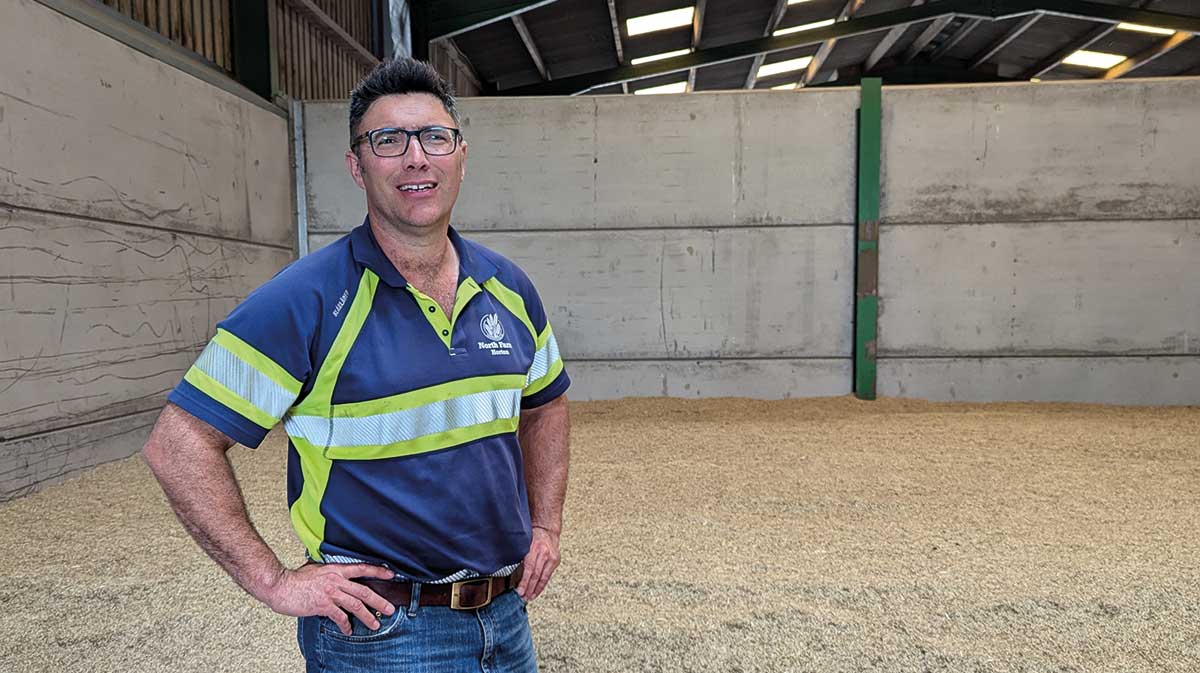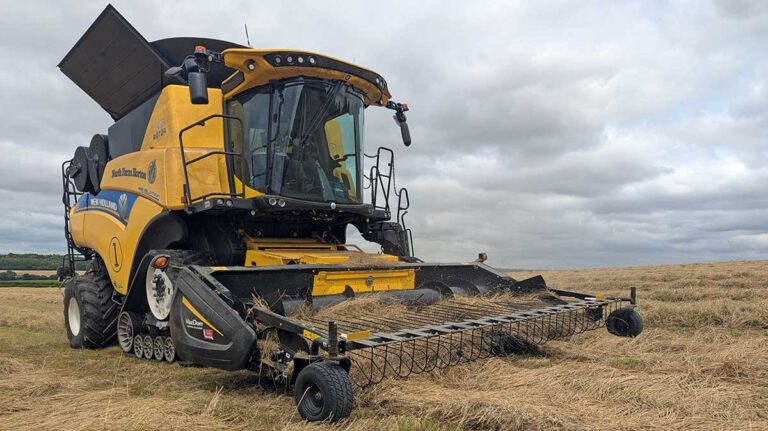When the dairy herd at North Farm Horton was sold in 2005, the Dorset business looked to the arable sector to replace that lost income.
Taking on whole-farm and stubble-to-stubble contracts, in the past two decades the combinable area has grown to nearly 1,300ha; 162ha of which is combinable crops on a neighbouring 566ha organic farm.
See also: Avant compact loaders make a difference on diversified Yorkshire farm
“Because of the various customers and the organic farm, our cropping is complex, and we have to be pragmatic, with rotational ploughing and whatever cultivation we deem necessary to get the best returns for ourselves and the landowners,” explains Peter.
Throughout a 12-month period, the business will establish and harvest wheat (grown to a milling standard), oats, winter barley, spring barley, marrowfat peas, a companion crop of spring oats and peas, oilseed rape, grain maize, sunflowers and grass seed.
There are also pumpkin and corn on the cob patches dotted throughout the ground. Straw is processed for thatching on the farm; a lucrative but labour-intensive enterprise where the grain is the bonus by-product.
Grass growing
North Farm became an official seed grower in 2015. Peter explains that one of the contract farms was an advocate for taking on the crop, but the advantages of having it within the rotation quickly became apparent.
“Not only does it come with a premium, we undersow it straight into the spring barley. This means we’re establishing a second and third crop without disturbing the soil and keeping roots in the ground continuously, which helps with carbon capture.”

Blackgrass competition
With two rounds of winter wheat normally following the grass seed, the crop also provides a break in the weed cycle, competing with the blackgrass and leading to a cleaner following crop.
Around 160ha is down as grass this season, half of which is the Barzico perennial ryegrass for Barenbrug, which will be sold to amenity growers.
Peter says they aim to increase the role of grass seed within the rotation to more than 400ha in the future.
Once the barley is harvested in August, the straw is baled and collected with a transtacker, keeping in line with the company’s hybrid 12m controlled traffic system.
Stubbles and the establishing grass crop are then used to overwinter 600 sheep, which come off in March. Grass crops then receive a dose of ethofumesate to control grassweeds.
“We have a zero-tolerance approach to weeds, so we use a comprehensive package of actives throughout the season, including Adama’s Falcon [propaquizafop], FMC’s Foxtrot [fenoxaprop-p-ethyl] and diflufenican. We also put two doses of fungicides through the sprayer,” Peter says.
Nutrition comes in the form of 170kg of nitrogen in the first year, with 180kg applied in the second year. Potash and phosphates are applied variably using the Soyl mapping system.
The right kit for harvest
Timing is vital for grass seed harvesting, which typically happens in July. Peter previously used a Shelbourne Reynolds stripper header mounted on a New Holland 10.90 combine, but in 2022 switched to mowing the crop ahead of two MacDon PW8 pick-up headers.
“As the crop matures, the seed moisture approaches 40-45%, which is the right time to mow,” he explains. “We mow overnight, or in light rain, as the damp grass suffers less from seed losses.
“We also adjust our Pottinger mowers on the link arms, tucking 5.2m of grass into 4.3m to match the PW8 pick-up header.”
Once mown, the grass will lose between 4% and 5% of its moisture in a 24-hour period, maybe 6% if it is particularly hot.
As any additional operations, such as tedding, raking or even merging, would risk significant seed losses, careful attention must be paid to the weather to ensure that the crop can dry naturally.
Peter notes that the New Holland 10.90 provides a clean sample in the grass crops. Not only this, thanks to agitators in the tank mean that unloading is not an issue.
Losses are further minimised with a sock on the end of the unloading auger, as the seed is so light it could easily blow over the trailer.
Once harvested, the seed is tipped onto a drying floor. As the seeds can’t be compacted, they are moved frequently between dryers to get an even moisture throughout, before the crop is cleaned and moved on to Barenbrug.
“It’s labour-heavy and requires a lot of work,” Peter says. “But that attention to detail pays off when the value of the crop is so high, with further premiums available for reaching the highest purity standards.”


